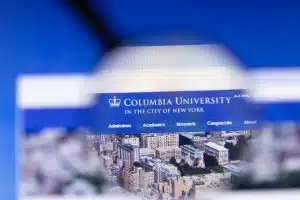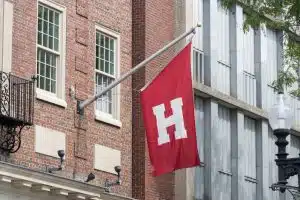Carnegie Mellon Waitlist Acceptance Rate: Stats and Tips
Finding out you’re on Carnegie Mellon University’s waitlist can leave you eager to know your chances of acceptance. Understanding this can help you figure out your next steps.
We’ve got your back. We’ll walk you through some essential waitlist statistics and provide practical tips. Our aim is to arm you with the knowledge to boost your odds of converting your waitlist position into an acceptance letter.
What Is Carnegie Mellon’s Waitlist Acceptance Rate?
The latest acceptance rate for those on Carnegie Mellon’s waitlist is a mere 0.9% for the Class of 2026. This figure highlights the fierce competition among candidates.
A look at the acceptance rates from the waitlist over the past five years gives a clear picture of the trends at Carnegie Mellon:
| Class | Students Waitlisted | Students Confirmed on Waitlist | Students Accepted | Waitlist Acceptance Rate |
| Class of 2023 | 5761 | 3579 | 140 | 3.9% |
| Class of 2024 | 6819 | 3461 | 288 | 8.3% |
| Class of 2025 | 8792 | 5319 | 35 | 0.7% |
| Class of 2026 | 8986 | 4652 | 43 | 0.9% |
| Class of 2027 | To be released | To be released | To be released | To be released |
The acceptance rate for students on the Carnegie Mellon waitlist has been always competitive, averaging around 3.45%. This means only a small number of waitlisted students manage to get in.
The acceptance rate has seen significant changes—it dropped from a high of 8.3% for the Class of 2024 to just 0.7% for the Class of 2025. These ups and downs show how unpredictable and changing the waitlist process can be.
Even with these shifts, if you’re on the waitlist, keep your hopes up and stay proactive. The trend is leaning towards more selectivity, making it tougher to get off the waitlist each year. It’s important to make your application stand out and keep in touch with the admissions office.
What Does It Mean to Be on Carnegie Mellon’s Waitlist?
If you’re on a waitlist, it means you’ve hit the admission criteria but there just wasn’t enough room to offer you a spot right away. Schools like Carnegie Mellon use waitlists as a way to keep their incoming class sizes on target.
For Carnegie Mellon, the waitlist serves as a backup, helping fill any specific needs in the class makeup after the first wave of admissions decisions. It’s all about keeping the student body well-rounded and diverse.
How Does Carnegie Mellon Approach the Waitlist?
Carnegie Mellon lets waitlisted students know their status by email, typically in the first week of May. This update is important for students still hoping to get in.
When picking students from the waitlist, the university doesn’t go in any set order. Selections are made based on what the incoming class needs at that moment, looking to get a good mix of academic interests, diversity, and talents in extracurricular activities.
Why You Might Have Been Waitlisted by Carnegie Mellon
Landing on Carnegie Mellon’s waitlist can depend on what the university needs at the time and how your application stands out. Here are the key factors:
1. Enrollment goals and class size limitations
Carnegie Mellon’s admissions decisions are heavily influenced by enrollment goals and the need to keep class sizes manageable. The university limits the number of students each year to ensure everyone gets plenty of attention and access to resources.
This commitment to maintaining a strong student-to-faculty ratio means that sometimes even top applicants end up on the waitlist. Waitlisting becomes a key strategy for the university to control class sizes and uphold the quality of education and campus life.
2. The need for a diverse incoming class
Another big part of Carnegie Mellon’s admissions strategy is building a diverse class. The university is dedicated to creating a vibrant, diverse environment that encourages learning from a broad spectrum of perspectives.
The school aims to balance diversity in all forms—geographic, cultural, and intellectual—which can lead to qualified applicants being waitlisted as efforts are made to form a well-rounded class. This focus on diversity enriches the campus atmosphere but also ramps up the competitiveness of the admissions process.
3. Departmental quotas and specific program capacities
The availability of spots in specific departments or programs can also lead to waitlisting. At Carnegie Mellon, every department has its own limits based on faculty size, resources, and program specifics, forcing tough decisions about which students to admit directly and which to waitlist.
If you’re waitlisted due to departmental quotas, it means you’re academically a great fit but faced stiff competition for a limited number of seats in your preferred program, highlighting the intense competition in certain areas of study at the university.
4. Your application essays
Your application essays play a key role in admissions decisions. They give a glimpse into who you are, your ambitions, and how you might contribute to the Carnegie Mellon community. A standout essay can really make you shine by showcasing your uniqueness and compatibility with the university.
If you’re on the waitlist, it could be because your essays didn’t quite hit the mark. Remember, essays are your opportunity to express your personality and goals. If they lack clear passion or don’t reflect Carnegie Mellon’s values, this could affect your application’s success.
5. Your letters of recommendation
The quality of your letters of recommendation is also crucial. They offer insights into your academic prowess, character, and promise through the eyes of teachers or professionals who know you well. Personalized, compelling recommendations can greatly strengthen your application, affirming your accomplishments and fit for Carnegie Mellon.
If you’re waitlisted, it might be because your recommendations weren’t strong enough. The admissions committee depends on these letters for a fuller picture of your abilities and university fit. Weak or vague letters might leave your application wanting amidst stiff competition.
What to Do if You’re Waitlisted by Carnegie Mellon
If you find yourself on Carnegie Mellon’s waitlist, which has a strict acceptance rate, there are several proactive steps you can take to improve your chances of admission. Here are six main tips:
1. Confirm your spot on the waitlist promptly.
It’s essential to secure your spot on the waitlist quickly. Just like many other schools, Carnegie Mellon needs you to actively choose to stay on their waitlist. This step shows you’re still interested in joining them.
Confirming your spot tells the admissions team you’re keen and staying in the loop. It’s a simple yet vital action to maintain your admission chances.
If you don’t confirm, you might be taken off the waitlist, effectively closing the door on your chance to attend Carnegie Mellon. Make sure to regularly check your email and the admissions portal to catch any important deadlines.
2. Update Carnegie Mellon with any significant achievements.
Letting Carnegie Mellon know about any new major accomplishments can give your waitlist application a boost. Whether it’s awards, academic achievements, or new leadership experiences since you applied, sharing these with the admissions office can help.
This extra info helps paint a fuller picture of what you’re capable of and highlights your growth. It could be what sets you apart from others on the waitlist.
However, focus on sharing significant updates. Overloading the admissions team with minor details can dilute the impact of your real achievements. Keep your updates meaningful and powerful.
3. Write a letter of continued interest.
Writing a letter of continued interest could be a game-changer. This is your chance to explain why Carnegie Mellon is still your top pick and how you envision yourself adding value to their community. It’s an opportunity to underscore your passion for the university and bring a personal dimension to your application.
Be detailed about what specifically attracts you to Carnegie Mellon and mention any recent achievements or developments that highlight your compatibility with the university. Authenticity and clarity are vital—let your genuine enthusiasm be evident.
Remember, this letter should offer new insights, not rehash your application. It’s about showing how you’ve evolved since you first applied and demonstrating your ongoing interest in being part of Carnegie Mellon.
4. Ask for an additional recommendation letter, if possible.
Securing an additional letter of recommendation could provide fresh perspectives on your character and accomplishments. Opt for someone who can shed light on different facets of your capabilities and how you might enrich the Carnegie Mellon community. This might be a recent teacher, an employer, or a mentor who understands you well.
A new recommendation can spotlight recent achievements or sides of your personality that your original application didn’t capture. It’s a chance to deepen your applicant profile and give the admissions committee more reasons to admit you.
However, this letter needs to contribute something new to your application. A repetitive or vague recommendation won’t do you any favors. The aim is to present new, compelling evidence of why you’re a standout candidate.
5. Stay engaged with the university’s admissions office.
Keeping in touch with Carnegie Mellon’s admissions office is a smart way to show you’re still very interested. This doesn’t mean bombarding them with emails, but thoughtful communication highlighting your eagerness to join and contribute to their community.
You can also show your engagement by attending any virtual events for waitlisted students or by asking insightful questions, demonstrating you’ve researched Carnegie Mellon well. These actions can ensure you remain on the admissions team’s radar positively.
Remember, it’s important to respect the admissions staff’s time. Make sure your messages are brief, meaningful, and not too frequent. This way, when the admissions committee revisits waitlisted applicants, your name stands out for the right reasons.
6. Consider your plan Bs and explore other options.
Having a backup plan while you wait for Carnegie Mellon is sensible. By securing your spot at another college, you ensure you have a solid option regardless of the waitlist outcome.
It’s wise to accept an offer from another institution, even if it requires a deposit. Doing so doesn’t stop you from accepting an offer from Carnegie Mellon later but guarantees you’re not left in limbo.
Consider exploring gap year possibilities or taking community college classes that might transfer. This period could be an opportunity to gain new experiences or enhance your academic profile, which might strengthen your application if you decide to reapply to Carnegie Mellon or elsewhere later on.
How to Handle Carnegie Mellon Waitlist Rejection
Facing rejection from Carnegie Mellon’s waitlist can be tough, but there are constructive ways to move forward. Here are five steps to process and overcome the setback:
1. Allow yourself to feel disappointed.
Feeling down after getting a no from the waitlist is totally normal. You’re allowed to be upset or annoyed by this. Recognizing your feelings is the first step toward moving past them.
Give yourself space to feel these emotions, but try not to let them keep you down for too long. Channeling this disappointment into motivation can spark your drive to explore new opportunities with a fresh outlook and energy.
2. Reflect on your application.
Understanding why you might have been waitlisted means taking a hard look at your application. Assess what you did well and where you could improve. This self-review can reveal valuable lessons.
Pay special attention to your essays, letters of recommendation, and extracurriculars. Finding areas that might have been weaker gives you a chance to strengthen them for your next application, whether to Carnegie Mellon or elsewhere.
3. Seek feedback from a mentor or counselor.
An outside perspective can be incredibly enlightening. Chatting with a mentor or counselor who knows the ins and outs of college admissions can shine a light on parts of your application that might not have hit the mark.
Their constructive feedback is important. It can help you make smart tweaks and boost your future application chances.
4. Focus on the opportunities at your accepted institutions.
Getting into any college is a big deal, and every school has its unique strengths that can boost both your academic and personal growth. Start looking into these opportunities to get pumped about your future.
Embrace your next chapter with enthusiasm. The college you end up going to will open doors you didn’t even know existed. Dive into everything it has to offer, from academics to clubs, and you might find yourself on paths you hadn’t imagined, leading to experiences that enrich your life in ways you didn’t expect.
5. Plan for the future and consider reapplying or exploring different paths.
Thinking about the future? If you’re still dreaming about Carnegie Mellon, look into how you can beef up your application for next time. Or think about other paths that might be just as exciting.
Reflecting on what you really want out of college and your career can help you pinpoint new interests or confirm the ones you already have. Whether you decide to try for Carnegie Mellon again or choose a different path, your ability to bounce back and adapt will play a huge role in your future success.
Is It Impressive to Get Waitlisted by Carnegie Mellon?
Being waitlisted is an achievement in itself. It’s definitely a sign that you were in the running, a pat on the back for your hard work and achievements. However, keep it real about your chances of moving up from the waitlist in such a competitive arena.
Does Carnegie Mellon Rank Students on the Waitlist?
Carnegie Mellon doesn’t rank its waitlisters. They look at what the incoming class needs as they go, which means your shot at getting off the waitlist depends on how your profile fits with those evolving needs. It’s all about the match and less about rankings.
When Will Carnegie Mellon Release the Waitlist Admission Decision?
If you’re on the waitlist, mark the first week of June on your calendar. That’s when you’ll hear about your status.
Given this timeline, it’s wise to weigh your options and stay open to other opportunities. Having a backup plan is key, considering the unpredictability of waitlist outcomes.
Conclusion
Making your way through the ups and downs of the Carnegie Mellon waitlist is a ride full of learning and growth. It’s a chance to toughen up, get clear about what you want, and look into different ways to achieve your academic and personal development goals.
Your journey might not go exactly as planned, but each step, whether straight ahead or to the side, opens up new chances to learn and grow. Keep pushing, stay adaptable, and approach what’s ahead with hope and an open heart.










































